Giving back: Alum Bob Grether on design, development, and making an impact
“It’s essential for developers to have a design background and for designers to understand development,” says Bob Grether (BArch 1969, MArch 1973). His recent gift to the Bauer Wurster Hall Renovation fund supported the transformation of a classroom for Abbey Master of Real Estate Development + Design (MRED+D) students.
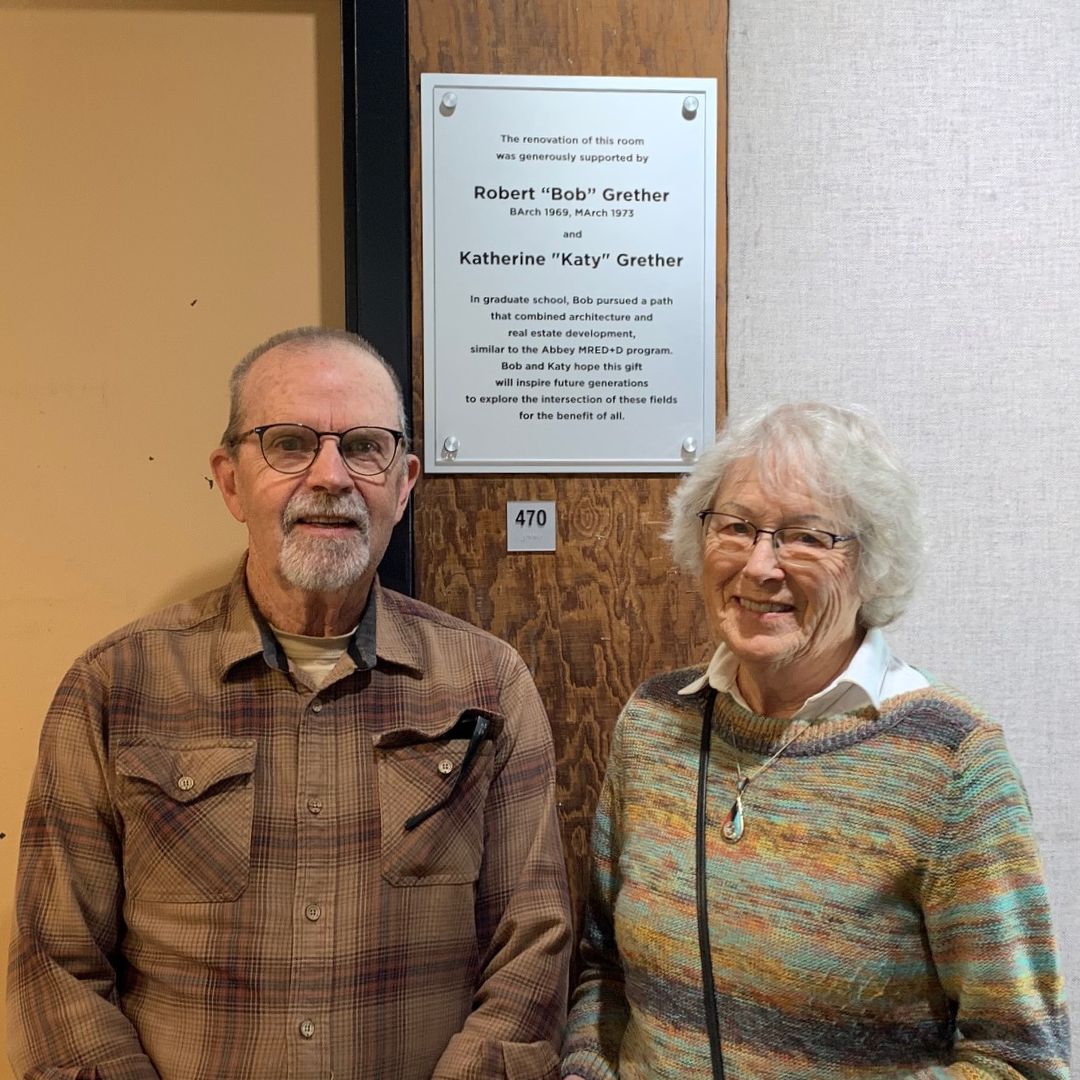
CED alum Bob Grether’s career exemplifies the transformative power of design and strategic development — and the outsize impact one person can have on a community. The extensive pro bono work he has enthusiastically undertaken over the past 25 years in his adopted hometown of Salida, Colorado, has helped reshape the economically struggling former mining and railroad town into a vibrant cultural hub and tourist destination.
Grether is also having a real impact on the College of Environmental Design. Bob and his wife, Katy, recently made a $200,000 gift to the Bauer Wurster Hall Renovation fund to upgrade a classroom used primarily by students in the Abbey Master of Real Estate Development + Design (MRED+D) program.
Thanks to the Grethers, the classroom was completely remodeled — new flooring, furniture, and paint — and equipped with state-of-the art AV instruction technology. An adjacent break-out room with a large monitor facilitates group projects and enables students to connect virtually to professionals outside CED.
“Much has changed in academics and research since Bauer Wurster Hall was completed in 1964, yet campus funds to update spaces to meet our new program needs are extremely limited,” says William W. Wurster Dean Renee Y. Chow. “Because of Bob and Katy’s generosity, we did not need to join the long campus queue for funding to provide the MRED+D students with an academic hub.”
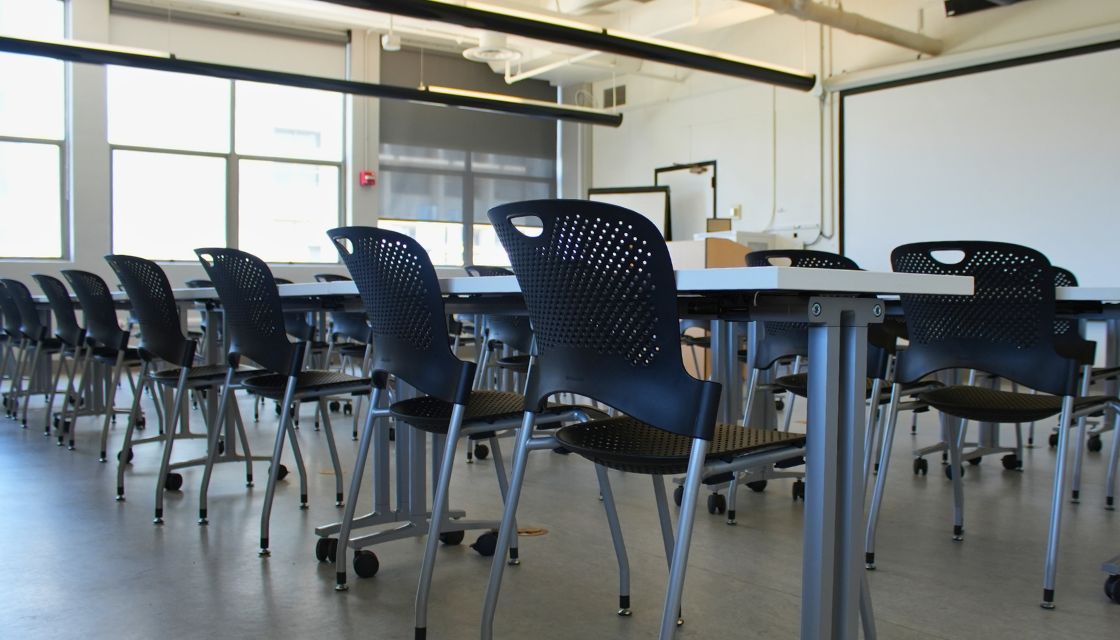
Abbey MRED+D Executive Director Aleks Baharlo adds, “Because the majority of our courses are held in this space, students and faculty benefit from these improvements every day. The dedicated use of this room strengthens the program’s identity in the college and fosters a sense of community among our students.”
Bob’s inspiration to give back to CED stems from his deep appreciation for his own foundational education and his enthusiasm for Berkeley’s MRED+D program. Always drawn to the intersection of design and development, Bob effectively crafted his own early version of MRED+D during his MArch studies at Berkeley in the early 1970s. Working with CED advisors Roger Montgomery and Donn Logan on architecture and urban design, and collaborating with an economics professor from the business school, Bob’s MArch thesis explored developing single room occupancy (SRO) housing atop San Francisco parking structures, with parking revenues subsidizing the housing.
“That’s why I was so excited when I heard that CED was launching the MRED+D program several years ago,” says Bob. “It’s essential for developers to have a design background and for designers to understand development.”
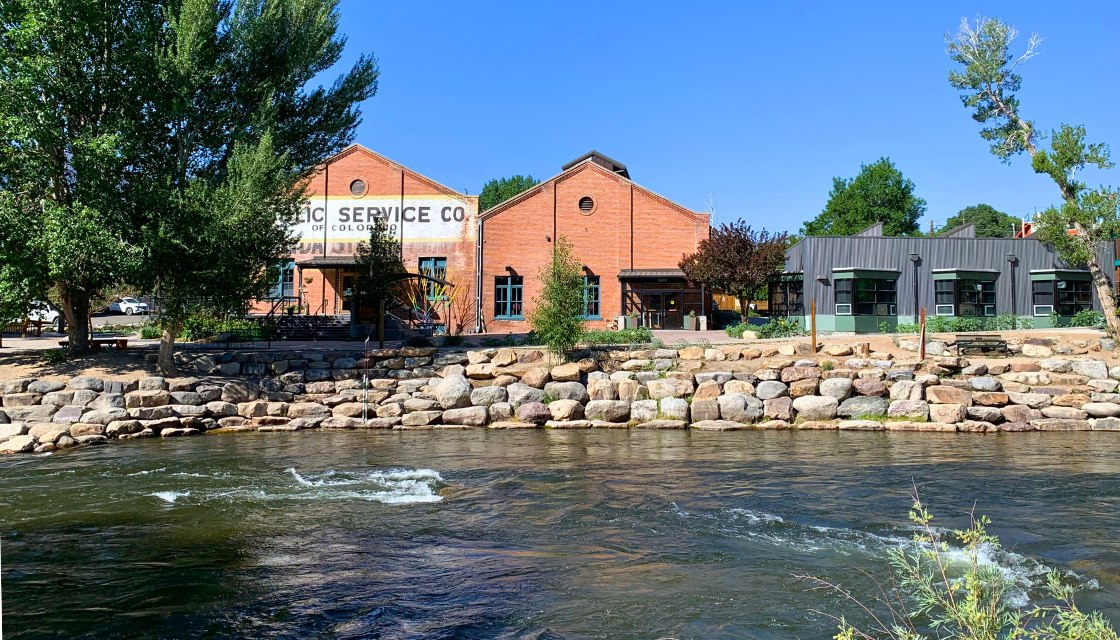
Bob has an extensive background in architectural design and real estate development. After earning his MArch, he spent a year at the Redevelopment Agency in Los Angeles, where he met Katy, and then he joined his thesis advisor at the Berkeley-based firm Elbasani, Logan and Severin Architects as its first employee. After about five years, he established his own firm, GLM Real Estate Services, specializing in infill residential and commercial development.
After running GLM for 25 years, Bob and Katy moved from the East Bay to Colorado. “I got involved in Salida to help boost the economy and address the housing shortage. In a small town you can make a big impact,” Bob says.
Among his proudest achievements is the transformation of the Steam Plant Event Center, which serves as a vital anchor for Salida’s historic downtown and has stimulated economic revitalization. He developed the master plan and design for the property, collaborating with the county, city, and volunteers to convert the old steam plant along the Arkansas River into a vibrant event hub. Initially envisioned as a theater, it expanded to include a ballroom and conference spaces and now hosts 500 events annually.
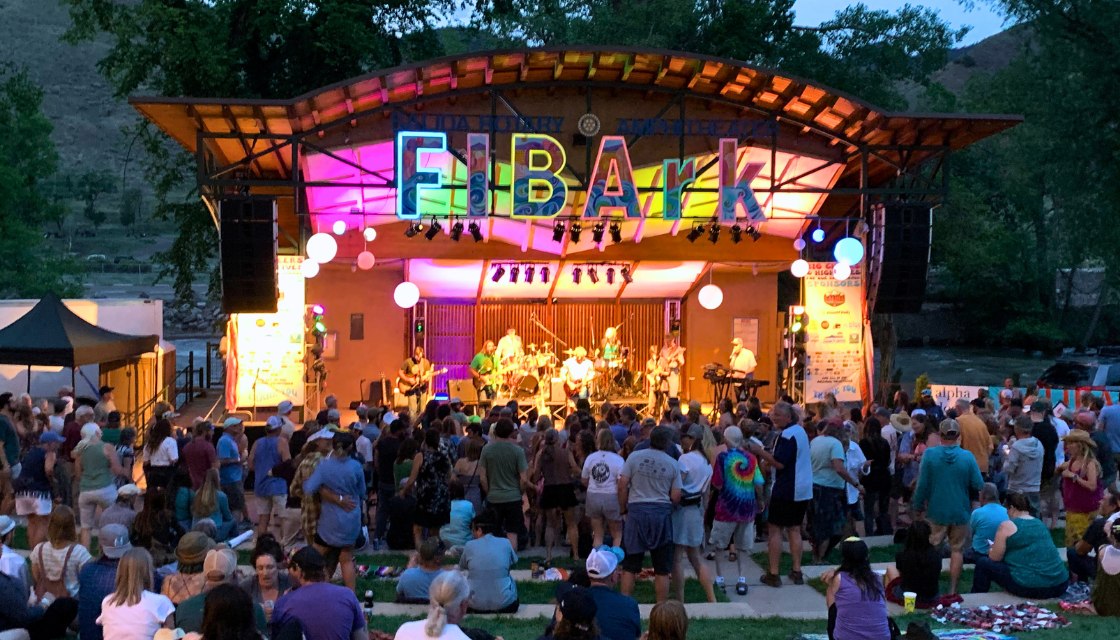
Bob has also created master plans and building prototypes for several housing developments in the area. These plans comprise mixed housing types — duplexes, fourplexes, and single-family homes — many of which thoughtfully integrate with Salida’s traditional neighborhood patterns, emphasizing porches, density, and alleys. “It’s like old New Urbanism,” he says.
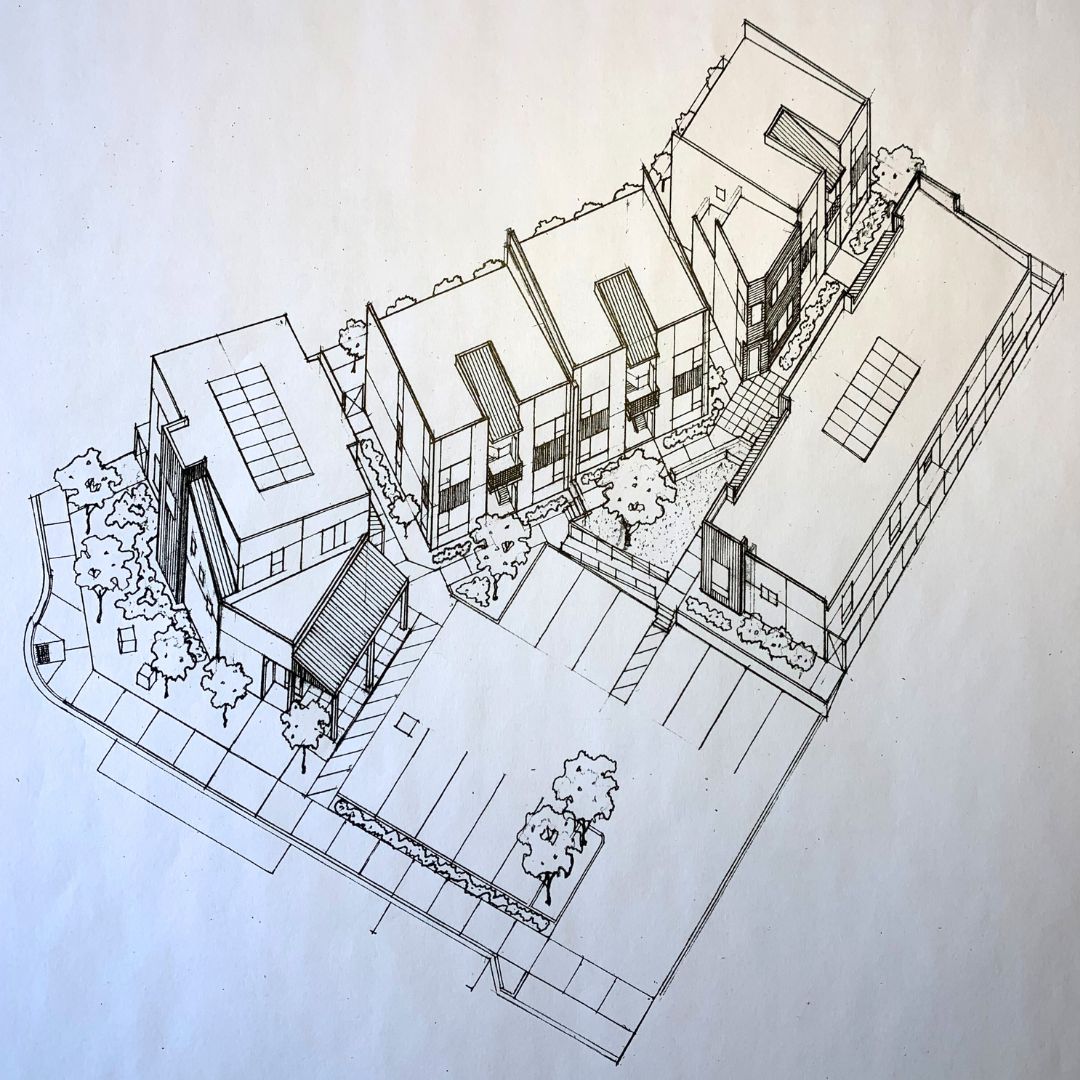
Bob and Katy are both excited by Jane’s Place, an innovative transitional housing project that is currently under construction. Featuring studios, one- and two-bedroom apartments and shelter units across four buildings, the mixed-use complex offers flexible solutions for diverse needs: winter shelter for those experiencing homelessness, temporary housing for AmeriCorps workers, transitional housing for new residents, and seasonal housing for groups like river rafting guides. Its ground floor includes commercial space for nonprofits to provide services to residents, as well as a coffee shop that will train people with disabilities as baristas. This echoes an earlier initiative that Katy spearheaded in Salida: a kitchenware shop that trained and hired people with developmental disabilities and, at the same time, brought new life to the downtown historic district.
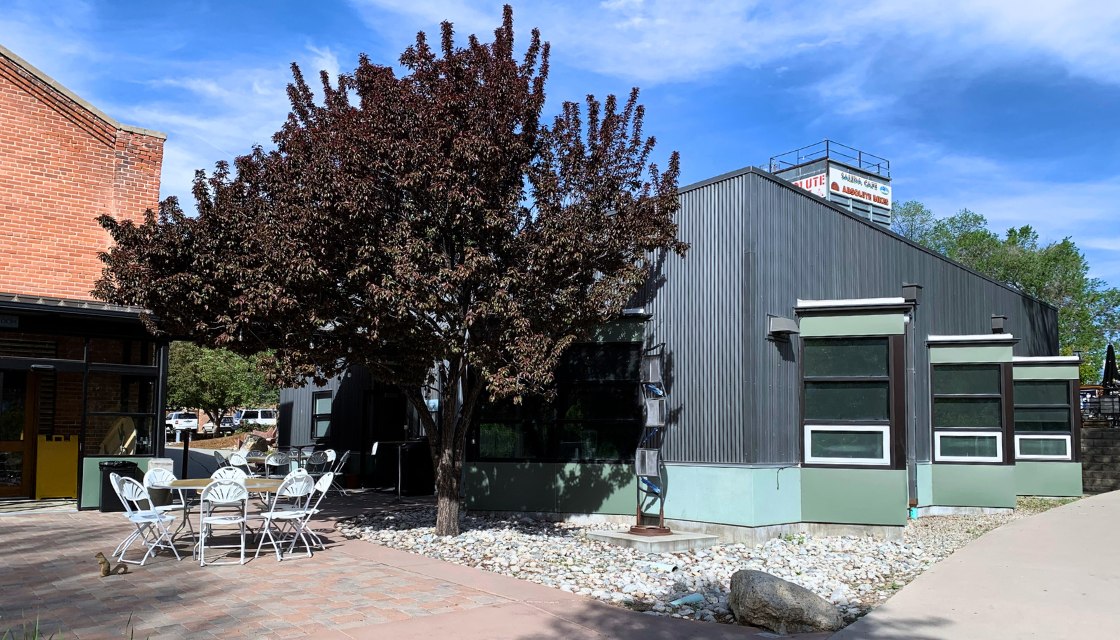
For Bob, giving back is profoundly fulfilling. Early success in real estate investment provided him the financial freedom to dedicate his time and expertise to pro bono work in Salida, allowing him to tackle meaningful projects without commercial constraints.
Bob’s advice for those seeking to impact their community or CED is simple: in a small town, or at a small college, you can make a big difference with modest projects. He urges others to “identify a need, apply your skills and passion, and commit to making a tangible contribution.”